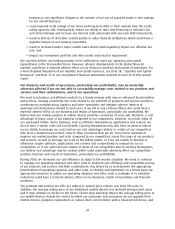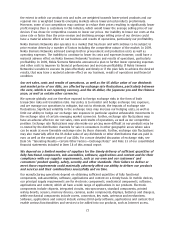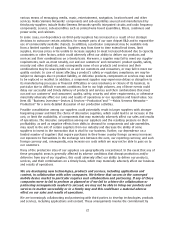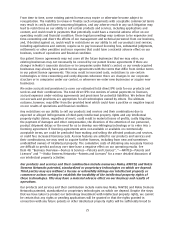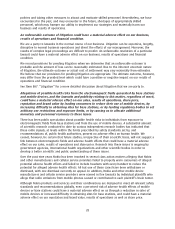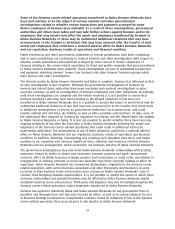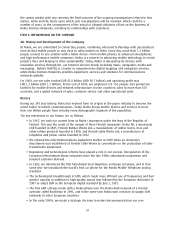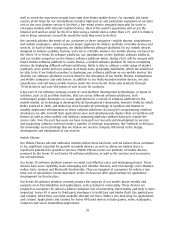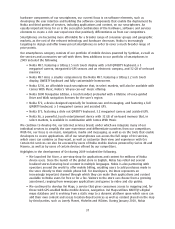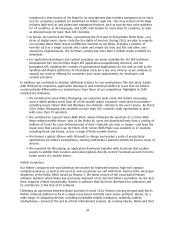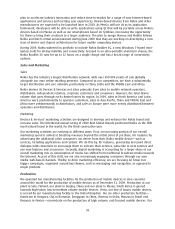Nokia 2009 Annual Report Download - page 32
Download and view the complete annual report
Please find page 32 of the 2009 Nokia annual report below. You can navigate through the pages in the report by either clicking on the pages listed below, or by using the keyword search tool below to find specific information within the annual report.contracts will differ from what was expected when the contracts were entered into. Moreover, such
contracts often require the dedication of substantial amounts of working capital and other resources,
which affects our cash flow negatively, or may require Nokia Siemens Networks to sell products,
services and solutions in the future that would otherwise be discontinued, thereby diverting resources
from developing more profitable or strategically important products. Any nonperformance by Nokia
Siemens Networks under those contracts may have significant adverse consequences for us because
network operators have demanded and may continue to demand stringent contract undertakings,
such as penalties for contract violations.
Providing customer financing or extending payment terms to customers can be a competitive
requirement in the network infrastructure and related services business and may have a
material adverse effect on our business, results of operations and financial condition.
Customers in some markets sometimes require their suppliers, including Nokia Siemens Networks, to
arrange, facilitate or provide financing in order to obtain sales or business. They may also require
extended payment terms. In some cases, the amounts and duration of these financings and trade
credits, and the associated impact on our working capital, may be significant. In response to the
tightening of the credit markets in 2009, requests for customer financing have increased in volume
and scope. However, during 2009, Nokia Siemens Networks reduced the amount of financing it
provided directly to its customers. Rather, as a strategic market requirement Nokia Siemens Networks
has primarily arranged and facilitated, and plans to continue to arrange and facilitate, financing to a
number of customers, typically supported by Export Credit or Guarantee Agencies (“ECA’s”). In the
event that those agencies face future constraints in their ability or willingness to provide financing to
Nokia Siemens Networks’ customers, it could have a material adverse affect on our business. Nokia
Siemens Networks has agreed to extend payment terms to a number of customers, and it will
continue to do so. Extended payment terms may continue to result in a material aggregate amount of
trade credits. Even when the associated risk is mitigated by the fact that the portfolio relates to a
variety of customers, defaults in the aggregate could have a significant adverse effect on us.
We cannot guarantee that Nokia Siemens Networks will be successful in arranging, facilitating or
providing needed financing, including extending payment terms to customers, particularly in difficult
financial market conditions. In addition, certain of Nokia Siemens Networks’ competitors may have
greater access to credit financing than Nokia Siemens Networks does that could adversely affect its
ability to compete successfully for business in the network infrastructure sector. Nokia Siemens
Networks’ ability to manage its total customer finance and trade credit exposure depends on a
number of factors, including its capital structure, market conditions affecting its customers, the level
and terms of credit available to Nokia Siemens Networks and to its customers, the cooperation of the
ECA’s and its ability to mitigate exposure on acceptable terms. Nokia Siemens Networks may not be
successful in managing the challenges connected with the total customer financing and trade credit
exposure that it may have from time to time. While defaults under financings and trade credits to
Nokia Siemens Networks’ customers resulting in impairment charges and credit losses have not been
a significant factor for us, these may increase in the future. See Item 5B. “Liquidity and Capital
Resources—Structured Finance,” and Note 33(b) to our consolidated financial statements included in
Item 18 of this annual report for a more detailed discussion of issues relating to customer financing,
trade credits and related commercial credit risk.
30


